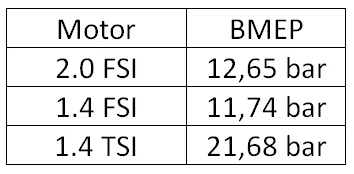Downsizing is defined as reducing the size of an engine without decreasing its power or maximum torque. This term is commonly associated with both Diesel and Gasoline internal combustion engines. This trend has been followed by all major automotive manufacturers as a way to make engines more efficient without sacrificing performance. This is a necessity to reduce pollution and meet the increasingly strict environmental standards in the automotive sector.
The particulate filter works as a mechanical filter and is usually made of a ceramic composite with a honeycomb-like geometry, with alternately closed and open channels, as shown in Figure 1. Particles are retained/filtered by the walls of the channels as the exhaust gases pass through them.
This article will briefly address one of the main parameters by which the efficiency of two identical engines can be compared, as well as the main technology allied with downsizing.
The need to reduce CO2 emissions and fuel consumption are the main objectives behind the development of internal combustion engines. Currently, the most effective method to reduce emissions is through downsizing, combined with supercharging. Supercharging is the main pillar of this methodology; without it, it would be impossible to substantially reduce the displacement of an engine without also decreasing its power. Fuel consumption is reduced through the reduction of mechanical component friction, the reduction of heat transfer through the cylinder walls, and by lowering the pumping and charge losses these engines face.

Image 1 - Downsizing
Downsizing leads to the production of more energy-efficient engines because they operate with very high BMEP (Brake Mean Effective Pressure) values compared to naturally aspirated larger engines. This parameter (BMEP) will be explained later in this article.
One of the main parameters to analyze when comparing two engines with identical operating principles is the Brake Mean Effective Pressure (BMEP).
As the name suggests, "Brake Mean Effective Pressure" is the average pressure inside the cylinder during all phases of an engine. In a four-stroke internal combustion engine, only one of the strokes generates work — the explosion — so the "BMEP" value does not represent the maximum pressure the engine experiences internally, which is much higher. Instead, it represents the average pressure the piston is subjected to during the four cycles of the engine: intake, compression, explosion, and exhaust.
In summary, this parameter reflects the engine's ability to generate work and can be calculated using the following equation:

For the equation to work, torque must be entered in [Nm] and displacement in [L].
The theoretical power of an engine can also be calculated using this parameter with the following equation:

Where each element of the equation means and must be used with the units of measure from Table 1.

Table 1 - Power Calculation, auxiliary table
The main limitations of increasing BMEP include customer acceptance of higher costs, increased internal temperatures that promote detonation, demanding operating conditions for components due to higher load operation, and the response time of supercharged engines due to turbo lag.
Below, in Table 2, parameters for three different gasoline engines are presented.

Table 2 - Example Engines
By applying the BMEP formula, we arrive at the results shown in Table 3.

Table 3 - BMEP
Through the analysis of these results, the theoretical concepts explained earlier can be verified. The two naturally aspirated engines show power levels that are almost directly proportional to their displacement (the 2.0 FSI engine, in addition to having a larger displacement, is more tuned, so it has a higher BMEP value). However, the newer engine, with a smaller displacement, achieves power values that previously could only be achieved with much larger displacements. This increase in power and torque is primarily due to the use of supercharging, which results in much higher BMEP values.
As mentioned earlier, the main pillar of downsizing is supercharging, and there are several technologies and methods to achieve it. But it is not enough to just supply the engine with high air pressure at a certain RPM; it is important to do this in a controlled and consistent manner across all engine operating ranges. To achieve this, multiple technologies may need to be combined.
Various supercharging technologies exist, such as variable geometry turbos, twin-scroll turbochargers, volumetric compressors, parallel and series hybrid systems, and even electrified systems.
Given the great variety, this article will only analyze the supercharging system used in the 1.4 TFSI engine considered in Table 3. This system consists of a volumetric compressor with a magnetic clutch and a turbocharger, shown in Image 2.













